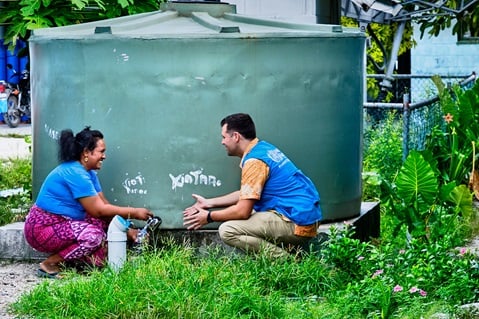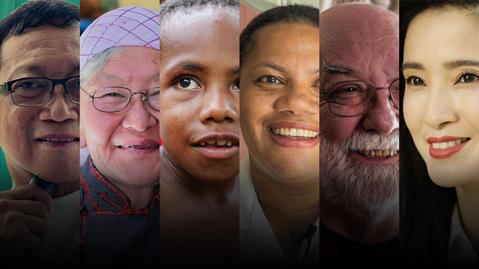Regional action on viral hepatitis
Since 2003, the WHO Regional Committee for the Western Pacific has played a key role in addressing viral hepatitis. This began with the 2003 session of the Regional Committee, during which HBV was included in the Expanded Programme on Immunization (EPI). Efforts against viral hepatitis were further strengthened by a resolution at the 2005 session of the Regional Committee to reduce HBV prevalence to less than 2% in children under 5 years of age by 2012. At the end of 2012, 30 out of 36 Member States in the Western Pacific Region had reached that goal. Following this tremendous success, the 2013 session of the Regional Committee set a new goal to reduce HBsAg prevalence to less than 1% in children under 5 years by 2017.
On 14 October 2015, as part of Resolution WPR/RC66.1, Member States endorsed the Regional Action Plan for Viral Hepatitis in the Western Pacific 2016–2020 with targets for 2020. Since then, WHO has supported Member States in advancing a coordinated hepatitis response that addresses the five priority areas identified in the Regional Action Plan. Further extending prevention towards elimination, the Regional Framework for Triple Elimination of Mother-to-Child Transmission (EMTCT) of HIV, Hepatitis B and Syphilis in Asia and the Pacific 2018–2030, (triple elimination, WPR/RC68.R2) was endorsed in October 2017. This articulates an integrated and coordinated approach towards triple elimination. It also presents new interventions for EMTCT of HBV including use of antiviral medicines, which build upon high-coverage hepatitis B vaccination programmes to achieve the global 2030 target of 0.1% HBsAg prevalence among children by 2030. The Western Pacific Region has made great strides in HBV control and prevention. Immunization programmes successfully reduced regional HBV prevalence to 0.9% among children born in 2012, thus achieving the 2017 regional goal of less than 1% HBV prevalence among 5-year-olds. By the end of 2018, 21 countries and areas had verifiably reached the new goal. Fifteen more are planning or undertaking serosurveys to confirm that they have reached a prevalence of less than 1% among children aged under 5 years.
Nineteen countries indicated that they had policies regarding HBV vaccination of healthcare workers. Countries are discussing implementation of the Regional Framework for Triple EMTCT, with China, Mongolia and Malaysia piloting interventions to generate evidence for decision-making. Progress has been made in these five priority areas, notably by raising awareness through World Hepatitis Day and policy development. National action plans have been established in Australia, China, Fiji, Japan, Kiribati, the Federated States of Micronesia, Mongolia, New Zealand, Vanuatu, Viet Nam and Wallis and Futuna. Plans are under development in Cambodia, Hong Kong SAR (China), Malaysia, Palau, the Philippines, the Republic of Korea and Solomon Islands. WHO has supported country-owned disease burden estimates and economic analyses in Cambodia, China, Fiji, Kiribati, Mongolia, the Philippines and Viet Nam. Other countries, including Australia, Japan, New Zealand and the Republic of Korea, have undertaken disease burden estimate analyses. Laboratory, surveillance and patient monitoring systems are being strengthened across the Region. Treatment guidelines for HBV and HCV are available in 16 countries and areas. Registration of new HCV medicines such as DAAs and procurement and price negotiations on hepatitis medicines are in progress in most countries. Universal access to HBV and HCV treatment has been achieved through public financing in Australia, Brunei Darussalam, Hong Kong SAR (China), Japan, Macao SAR (China), Malaysia, New Zealand, the Republic of Korea and Singapore. National health insurance now covers HBV and HCV treatment in Mongolia and Viet Nam. In China, hepatitis B treatment is covered by health insurance, while the costs of DAA treatment for hepatitis C are being financed by local public financing mechanisms in several provinces and cities. Yet with less than 5% of people living with chronic HBV and HCV receiving treatment in the Western Pacific Region, faster and greater scaling up of diagnosis and treatment is needed to achieve the Sustainable Development Goal to eliminate viral hepatitis as a public health threat by 2030.





